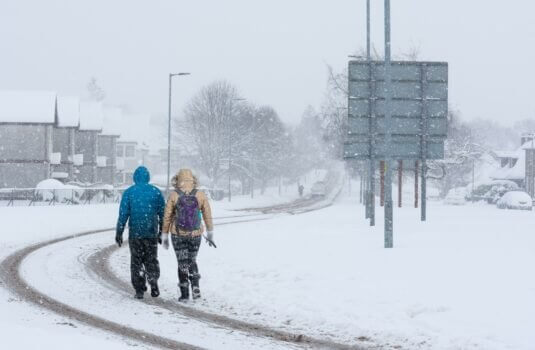A Guide for Warm-Weather Professionals
One of the greatest benefits of a travel nursing career is the freedom to explore different parts of the country, experiencing new cities and cultures while earning competitive pay. For healthcare professionals accustomed to warmer climates, an assignment in the northern United States during winter can present a unique set of challenges. Proper preparation is the key to a successful and enjoyable contract. A winter travel nurse assignment offers a chance to see beautiful snowy landscapes and participate in seasonal activities.
Many people actively seek out cold and snow for the winter sports and festive atmosphere that can only be found during this time of year. A travel assignment could be your ticket to world-class skiing destinations in states like Colorado or Utah. Beyond the slopes, winter brings charming festivals, ice skating, and the quiet beauty of a snow-covered town. With the right mindset and preparation, a cold-weather travel nurse assignment can become a memorable and rewarding professional and personal experience.
Essential Gear and Packing Strategies
Once you have accepted a travel nurse assignment in a colder region, your first step is to research the specific weather patterns of that location. Does it receive heavy snowfall? Are high winds a common occurrence? This information is critical for creating a packing plan that ensures you stay warm and safe.
- Invest in a Quality Winter Coat: Your outerwear is your primary defense against the elements. Select a winter coat that is insulated for warmth and offers protection from wind and moisture. A waterproof or water-resistant shell is essential for staying dry in snow or sleet.
- Select Proper Footwear: Keeping your feet warm and dry is crucial for comfort and safety. Invest in insulated, waterproof boots with deep treads for reliable traction on icy or snowy surfaces. Proper footwear prevents slips and falls while ensuring your feet remain comfortable during your commute.
- Accessorize for Full Protection: Your head, hands, and feet are most susceptible to the cold. Pack a warm hat or earmuffs, insulated gloves or mittens, and thick socks made from wool or a blend. These accessories are vital for preventing heat loss and protecting your extremities. For ultimate warmth, invest in hand warmers and foot warmers, which can be placed inside gloves and shoes and offer up to 10 hours of warmth once activated.
- Layer Your Clothing Effectively: Wearing multiple layers is a proven strategy for staying warm. This method traps heat between each layer. Start with a moisture-wicking base layer to keep your skin dry, add an insulating middle layer like fleece, and top it with your protective outer coat.
How Will You Get to Your Destination?
Your travel plan is an important consideration when researching travel nursing destinations, particularly if you are heading to a region known for significant snowfall and icy conditions. How you arrive can set the tone for your entire travel nurse assignment.
- Preparing Your Vehicle for Winter Roads: If you intend to drive, your car must be winter-ready. This may involve installing winter tires for better traction or purchasing a set of tire chains, which are required on certain mountain passes. Also, check your antifreeze and other vehicle fluids.
- Considering Alternative Transportation: For those not experienced with or confident in driving on frozen roads, seeking an alternative way to reach your destination is a wise choice. Flying is often the fastest and safest option, removing the stress of a long, potentially hazardous drive through winter weather.
- Navigating Local Transit Upon Arrival: After you arrive, you will still need to get around. Before you leave, research the public transportation system in your new city. Ride-sharing services, buses, or light rail can be excellent alternatives to driving your own vehicle, especially during heavy snowfall.
Adapting to Life in a Colder Climate
Once you have settled into your new home, learning to cope with the cold is the final step. If you are unaccustomed to frigid temperatures, it is important to find a healthy balance between indoor and outdoor activities. Always wear the appropriate clothing when you venture outside, even for short periods. The layering technique remains your best tool for managing body temperature, allowing you to add or remove clothing as you move between heated indoor spaces and the cold outdoors.
Begin Your Next Professional Journey
Ventura MedStaff connects you with professional healthcare opportunities nationwide, providing the guidance you need for a successful assignment. Our team is dedicated to supporting you through every step, from researching the top travel nursing destinations to finding the right position and preparing for your new location. Explore travel nursing and allied health jobs with a medical recruiting agency that is committed to ensuring your success. Contact Ventura MedStaff to learn more!






